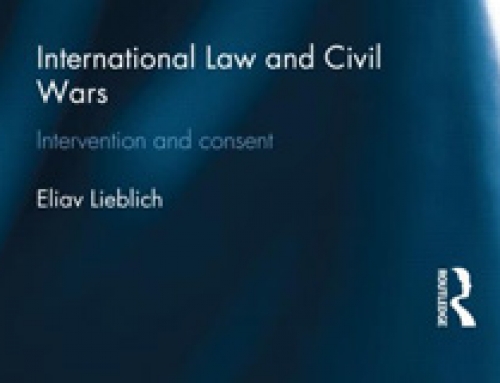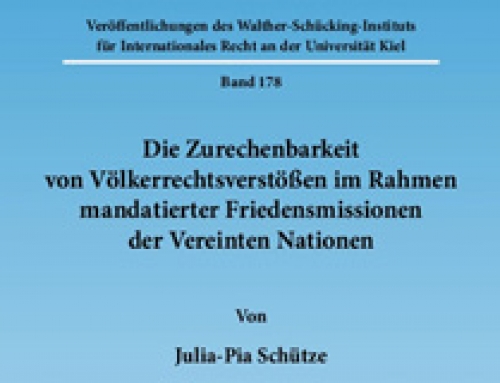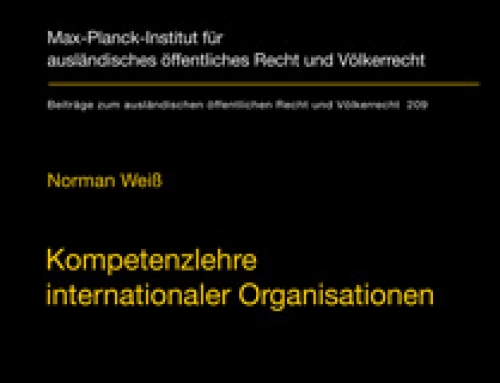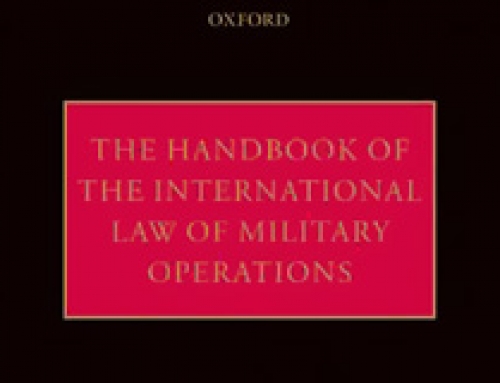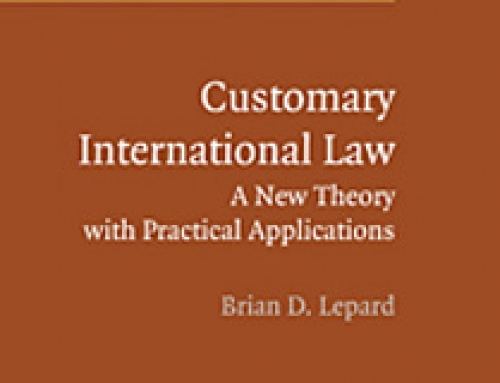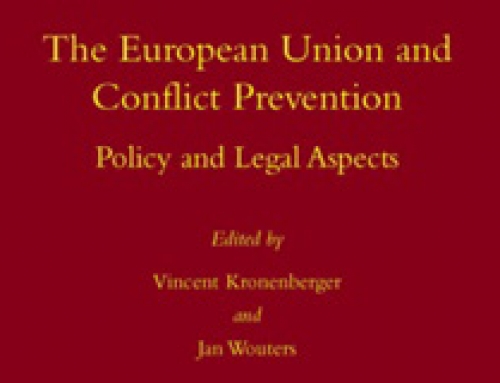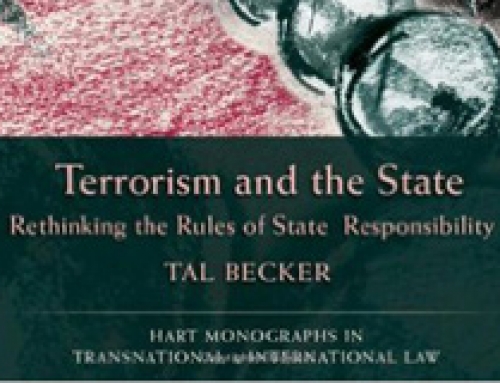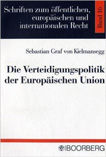
Sebastian Graf von Kielmansegg, Die Verteidigungspolitik der Europäischen Union: Eine rechtliche Analyse [The Defence Policy of the European Union: A Legal Analysis] (Boorberg Verlag, Stuttgart, 2005) ISBN 3-415-03565-4 (pbk), EUR 52.00 (pbk), 552pp.
The book reviewed here offers a legal analysis of the military aspects of the ESDP. Originally submitted as a doctoral dissertation at the Department of Jurisprudence of the University of Mannheim, it forms part of a growing body of academic literature published in German on the legal aspects of the ESDP. Von Kielmansegg’s work distinguishes itself from similar studies by its comprehensive and detailed treatment of the subject matter. The book is divided into three parts. The first describes the difficulties encountered in the development of a common European defence policy, the second consists of the actual legal analysis of the normative framework governing the military aspects of the ESDP, while the final part draws upon previous chapters to paint an overall picture of the legal ‘constitution’ of the ESDP.
Rather than simply rehearsing the historical evolution of European defence integration (the relevant facts have been described elsewhere and are generally well-known), von Kielmansegg opens his book with a discussion of two sets of considerations that have defined the development of the ESDP. On the one hand, the politically sensitive nature of security and defence matters means that cooperation between European States in this area does not follow the same supranational logic as their integration in other fields, in particular the economic one. On the other hand, Western European defence cooperation during the Cold War has taken place entirely outside the institutional framework of the European Communities. Not only do these factors demonstrate, according to von Kielmansegg, that security and defence policy resists ‘real’ integration and that in this sphere intergovernmentalism is inevitable, but they are also largely responsible for a ‘double delay’ in the emergence of the ESDP. As European defence cooperation has taken a separate course (Sonderweg) from the main flow of European (economic) integration after the end of the Second World War, it took an initial delay of forty years before the EC/EU began to address military and defence matters at all. It then took an additional delay of tens years following the end of the Cold War before the Member States of the EU agreed to develop an operationally capable security and defence policy. As the author explains, this ‘double delay’ burdens the ESDP with certain structural and functional difficulties. Externally, the existence of various international as well as regional security actors—above all the UN, NATO, WEU and the OSCE—means that the ESDP had to be embedded in a web of pre-existing security structures and policies. Internally, the ESDP had to be accommodated within the tripartite legal framework of the EU. Finally, the rapid development of its military dimension has called into question the EU’s self-conception as a ‘civilian power’.
The second part of the book explores how the Member States of the EU have responded to these difficulties. It examines the legal framework of the ESDP from three perspectives: the competences of the EU in military matters, the ESDP’s institutional and decisions-making structures, and its range of participants. Regarding the first issue, von Kielmansegg observes that under current rules the EU’s competences are limited to the development of a common defence policy, but do not include the power to conduct a common defence. This raises the question as to what exactly distinguishes these two concepts from one another. Since both concepts contain the word ‘defence’, von Kielmansegg argues that their interpretation should be based on this term. An analysis of the relevant provisions reveals that the Treaty on European Union employs the word ‘defence’ broadly to refer to the use of military means for security and foreign policy purposes, including international crisis management and territorial self-defence. This suggests that the difference between a common defence policy and a common defence is not functional, but normative in nature. In other words, the two concepts relate to the same subject matter, but the former involves a form of cooperation of lower normative density, thus leaving the Member States greater freedom of action, than the latter.
This distinction between a common defence policy and a common defence has much to recommend it, though some of the conclusions von Kielmansegg draws from it are debatable. In particular, he insists that the EU presently lacks the competence to maintain integrated forces and establish its own military command structures, and instead must rely solely on contributions made by its Member States as well as third States and organizations (the ‘principle of recourse’). Even though the line between a common defence policy and a common defence has to be drawn somewhere, nothing in the Treaty on European Union demands that it should lie where von Kielmansegg has drawn it. In fact, the establishment of a Civilian/Military Cell within the EU Military Staff (EUMS), rather than being an act of dubious legality as von Kielmansegg would have it, demonstrates that the Member States themselves consider the EU to be competent to exercise some powers of military command, and not just political control, over EU-led crisis management operations. Otherwise, the author rightly emphasizes that under the present legal framework the EU has no authority to determine what kind of military contributions the Member States should make in the context of the ESDP, or to compel them to participate in a particular crisis management operation (the ‘principle of voluntarism’).
The chapter on the institutional aspects of the ESDP brings no surprises: it confirms the Council’s predominant role in the field of defence policy and that decision-making in this area is subject to the principle of unanimity. Perhaps the most valuable part of this section is therefore von Kielmansegg’s informed discussion of the arrangements adopted for the military command and control of EU operations, especially the role that NATO plays in the ESDP pursuant to the ‘Berlin plus’ agreements. The chapter dealing with the question of participation in the ESDP is of equally high interest. Even though the ESDP is without prejudice to the ‘specific character of the security and defence policy of certain Member States’, von Kielmansegg argues that the post-neutral Member States cannot rely on this clause to fully withdraw from the military side of the ESDP. At present, the Treaty on European Union recognizes flexibility of participation only on a case-by-case basis in the sense that the Member States retain the right to decide freely whether or not they intend to contribute to a given EU operation. However, the Constitutional Treaty also introduces long-term, ‘abstract’ flexibility into the ESDP in the form of ‘structured cooperation’.
Seasoned observers of the legal dimension of the ESDP are unlikely to find much novel details in von Kielmansegg’s work. Nevertheless, his book constitutes a welcome addition to the existing literature on the topic. It provides a thorough and comprehensive analysis of the legal framework of the ESDP, and contains a number of valuable insights, such as the thesis of a ‘double delay’, as well as practical recommendations for improving the efficiency of the ESDP. The fact that von Kielmansegg systematically compares the current legal situation against the relevant provisions of the Constitutional Treaty throughout the book is particularly useful. However, certain substantive issues, such as the attribution of international responsibility for the conduct of EU forces, have been treated only in passing and thus without sufficient care. The author could also have linked the theoretical discussion found in the first part of the book more clearly with his conclusions. At times, the analysis would have benefited had the author consulted the internal documents of the Council more widely. Still, this is a balanced, carefully researched and well-written book.
Published in (2006) 11 European Foreign Affairs Review 584–586.


